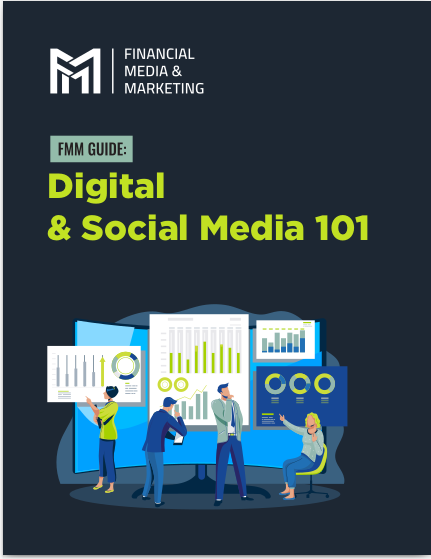Key Takeaways:
-
Small website mistakes can significantly impact your ability to attract and convert new leads, potentially costing you valuable business every day.
-
Optimizing user experience, improving content strategy, and ensuring strong call-to-action placements can drastically improve lead generation.
Is Your Website Helping or Hurting Your Business?
As a financial advisor, your website isn’t just a digital business card—it’s a lead generation machine. Or at least, it should be. If you’re not getting as many leads as you’d like, your website might be to blame. The truth is, even minor mistakes can drive potential clients away, making them hesitant to trust you with their financial future.
Your online presence plays a crucial role in building credibility, establishing trust, and converting visitors into clients. If you’re making any of these five website mistakes, you could be losing out on new leads every single day. Let’s dive deeper into what might be holding you back and how you can fix it.
1. A Confusing or Outdated Website Design
Your Website Needs to Look Professional—And Be Easy to Navigate
First impressions matter, and your website is often the first interaction potential clients have with you. If it looks outdated, cluttered, or hard to navigate, visitors will leave before they even get a chance to learn about your services.
In 2025, a modern website needs to be visually appealing and easy to use on all devices, especially mobile. If your site isn’t optimized for mobile users, you’re missing out on a huge chunk of potential leads. Studies show that most web traffic now comes from mobile devices, and a poorly formatted site can make you look unprofessional.
Additionally, your branding needs to be consistent. If your colors, fonts, and layouts don’t match across pages, it can create a confusing experience. A well-structured website ensures potential clients feel comfortable and confident in your services.
How to Fix It:
-
Use a clean, professional design with a consistent color scheme.
-
Optimize for mobile so your site looks great on any screen size.
-
Ensure intuitive navigation with clear menu options and a simple layout.
-
Conduct user testing to identify and fix design issues that impact experience.
2. No Clear Call-to-Action (CTA)
If You Don’t Tell Visitors What to Do Next, They Won’t Do It
One of the biggest website mistakes financial advisors make is failing to provide clear, compelling calls to action. If a visitor lands on your site, likes what they see, but doesn’t know what to do next, they’ll simply leave.
A strong CTA guides potential leads through the next steps, whether it’s booking a consultation, downloading a free guide, or signing up for a newsletter. If you don’t have a well-placed, persuasive CTA, you’re leaving money on the table.
Your CTAs should also be relevant to the user’s journey. A visitor on your homepage might need a simple, broad CTA like “Get Started Today,” while someone reading a blog might need something more targeted, like “Download the Free Investment Guide.”
How to Fix It:
-
Make sure every page has a clear, action-oriented CTA.
-
Use persuasive language like “Schedule Your Free Consultation Today” instead of generic phrases like “Learn More.”
-
Position CTAs in highly visible areas, such as the top of the homepage, at the end of blog posts, and in the sidebar.
-
A/B test different CTAs to see which ones perform best.
3. Weak or Nonexistent SEO Strategy
Your Website Won’t Get Leads If No One Can Find It
You might have the best-looking website, but if it doesn’t show up in search engine results, it won’t bring in leads. Search engine optimization (SEO) is crucial for getting your site noticed. Without it, you’re relying on word-of-mouth and direct traffic, which limits your reach.
SEO isn’t just about using keywords—it’s about providing valuable content and a seamless user experience. Sites that load slowly, have poor navigation, or lack high-quality content won’t rank well.
How to Fix It:
-
Use relevant keywords throughout your site, especially in titles, headings, and meta descriptions.
-
Regularly update your site with fresh content like blog posts and financial insights.
-
Improve page speed, as search engines favor fast-loading websites.
-
Build backlinks by collaborating with reputable websites in the financial industry.
-
Optimize images and multimedia elements to reduce loading times.
-
Ensure your site follows accessibility standards, as search engines prioritize user-friendly content.
4. Lack of Trust Signals
Potential Clients Need to Feel Confident About Working With You
Would you trust a financial advisor without credentials, testimonials, or professional affiliations? Neither would your website visitors. If your website lacks trust signals, you may be losing leads simply because people aren’t sure if you’re the right choice.
Trust signals reassure potential clients that they’re making the right decision. If you don’t have them, you risk looking like an amateur rather than a seasoned expert.
How to Fix It:
-
Display certifications and credentials prominently.
-
Feature client testimonials to showcase positive experiences.
-
Include trust badges, such as affiliations with reputable financial organizations.
-
Maintain an updated blog with expert insights to demonstrate thought leadership.
-
Add a privacy policy and security assurances to show you take data protection seriously.
-
Clearly outline your experience and success rates to reinforce your credibility.
5. Slow Load Times and Technical Issues
Nobody Waits for a Slow Website in 2025
People expect websites to load quickly. If your site takes more than a few seconds to load, visitors will leave before they even see your content. Additionally, broken links, error pages, and outdated plugins can create a frustrating experience, making people lose trust in your brand.
Speed isn’t just about convenience—it’s a major ranking factor for search engines. A slow website can negatively impact your SEO and visibility, compounding your lead generation problems.
How to Fix It:
-
Optimize images and media to reduce load times.
-
Use a reliable hosting provider to ensure site stability.
-
Regularly check for broken links and fix them immediately.
-
Keep all plugins and software up to date.
-
Use caching solutions to improve performance.
-
Monitor your website’s speed regularly and address any slowdowns immediately.
How to Turn Your Website Into a Lead-Generating Machine
Now that you know the five biggest website mistakes financial advisors make, it’s time to take action. Fixing these issues won’t just improve your website—it will transform it into a lead-generating tool that works for you 24/7.
The good news? Most of these fixes don’t require a complete website overhaul. Small improvements can lead to significant increases in traffic, engagement, and conversions. By ensuring a modern design, strong CTAs, solid SEO, trust signals, and fast load speeds, you can make sure your website is helping—rather than hurting—your business.










